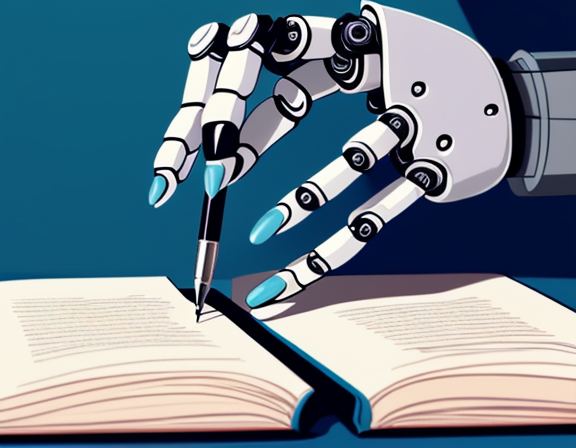By Marion J. Tate, CETL Assistant Director of Educational Development

Artificial intelligence (AI) is reshaping the way educators design and deliver learning experiences. Among its many applications, the use of AI chatbots offers new opportunities for experiential learning grounded in social interaction. One example is using chatbots for the simulation of real-world challenges. By integrating theories of learning with technological innovation, chatbots can become powerful tools for mediating dialogue, critical thinking, and transformation in the classroom.
The Role of AI Chatbots in Experiential Learning
Experiential learning emphasizes that knowledge is socially constructed through interaction and participation. Sociocultural theorists such as Vygotsky (1978), Rogoff (1990, 1998), and Lave and Wenger (1991) argue that learning is situated in cultural and social contexts, where collaboration, dialogue, and shared activities like collaborative storytelling or lab experiments play central roles (Lave & Wenger, 1991; Rogoff, 1990, 1998; Vygotsky, 1978). Similarly, AI chatbots can provide learners with various interactive opportunities, such as solving equations, simulating job interviews, or serving as a classroom resource for students to consult about assignments and readings. Unlike static educational materials, chatbots allow learners to test ideas in a dynamic conversation that mirrors authentic social interaction.
Van den Berg (2024) highlights how simulations increase student engagement when they replicate genuine contexts. Similarly, Aldulaijan and Almalky (2025) demonstrate that authentic learning fosters deeper cognitive and emotional involvement. When designed with authentic learning in mind, chatbots can simulate real-world challenges that align closely with professional, civic, or academic situations.
Dimensions of Social Interaction in Chatbot Design
To realize their potential, AI chatbots should be designed with careful attention to the layered dimensions of social interaction. The following dimensions illustrate how social interaction theory informs chatbot design.
- Interpersonal and Dialogic: emphasizes the central role of conversation and collaboration in knowledge construction. Likewise, chatbots are conversational, providing opportunities for students to engage in dialogue through a question-and-response format. For instance, educators can design chatbots with multiple perspectives of a debate, allowing students to practice defending arguments and refining counterpoints to receive immediate feedback. This fosters dialogic interactions that deepen understanding.
- Cultural and Historical: embeds norms, symbols, and traditions. Similarly, chatbots can be designed to incorporate cultural narratives, storytelling traditions, or discipline-specific language practices. By doing so, they highlight meaningful historical and cultural contexts, engaging learners in a way that is both relevant and authentic. An educational example may include a chatbot designed for a historical era, allowing learners to converse about traditions, customs, and art forms of a specific period.
- Mediated Language and Tools: emphasizes that higher mental functions are mediated through cultural tools such as language, writing, and numbers (Vygotsky, 1978). AI chatbots serve as one example of a mediating tool, enabling students to practice using symbolic systems to think, reason, and solve problems. Language educators can integrate chatbots to facilitate real-time translation practice, such as verb conjugation. Chatbots can offer corrections, hints, and model proper grammatical structures, providing immediate feedback.
- Transformative: does not merely transmit information; it transforms thinking. Scaffolded problem-solving helps students gradually acquire knowledge on a step-by-step basis until mastery is attained. For example, chatbot simulations can guide nursing students through patient case diagnosis. This process starts by making possible suggestions with an explanation. Then, shifting to a scaled-back approach by asking guiding questions (e.g., “What symptoms seem most critical?”). This allows space for the student to reason and diagnose independently.
Conclusion
Beyond engaging students in conversation, chatbots can also encourage higher-order thinking. Well-crafted scenarios prompt learners to weigh evidence, consider multiple viewpoints, and reflect on decisions. Including a reflective component for students ensures that chatbot interactions move beyond surface-level exchanges, fostering deeper learning outcomes aligned with learning objectives.
The integration of AI chatbots into education offers more than a technological novelty; it opens a pathway to socially grounded, experiential learning. By situating chatbot interactions within interpersonal, cultural, and transformative dimensions of social interaction, educators can design simulations that engage students authentically while aligning with learning outcomes. However, there are limitations to what chatbots can do. Chatbots cannot fully replicate human nuance, empathy, or contextual judgment, and they work best alongside human guidance, where thoughtful design and careful integration maximize their effectiveness.
This article was adapted from Designing AI Chatbots to Simulate Real-World Challenges in the Classroom, a Colleague Development Days (Fall 2025) professional development session facilitated by Dr. Phillip Olla and Dr. Marion Tate. Email tatema@udmercy.edu to join the learning community dedicated to creating AI Simulation Chatbots.
References
Aldulaijan, T., & Almalky, T. (2025). Authenticity in AI simulations: Enhancing engagement in higher education. Journal of Educational Technology Studies.
Lave, J., & Wenger, E. (1991). Situated learning: Legitimate peripheral participation. Cambridge University Press.
Rogoff, B. (1990). Apprenticeship in thinking: Cognitive development in social context. Oxford University Press.
Rogoff, B. (1998). Cognition as a collaborative process. In W. Damon (Ed.), Handbook of child psychology (pp. 679–744). Wiley.
Van den Berg, J. (2024). Designing simulations for authentic learning in digital environments. International Journal of Simulation-Based Learning.
Vygotsky, L. S. (1978). Mind in society: The development of higher psychological processes. Harvard University Press.